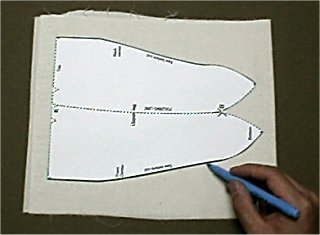
To show index frame
 |
Soft cloth doll Free pattern and instructions! < Prev. To the top. Next > |

 |
Soft cloth doll Free pattern and instructions! < Prev. To the top. Next > |










This part is a standard of softness for your Cindy. Other parts are stuffed compairing the softness to this part. So adjust the softness of this part carefully to increase or decrease the amount of filling to get your favorite softness. Since filling shrinks over long periods, stuff as firmly as you feel "a little firm". Do not stuff so firmly or joints will not be able to be bent. Since Sweet Cindy's joints are covered with cotton jersey cloth.











































About DOKU
The "DOKU" does not mean a doctor. "DOKU"
originates in the Japanese word "DOKUTOKU", and it means unique and
original.
These pages are originally written in Japanese, and translated into
English. Original Japanese pages are here.